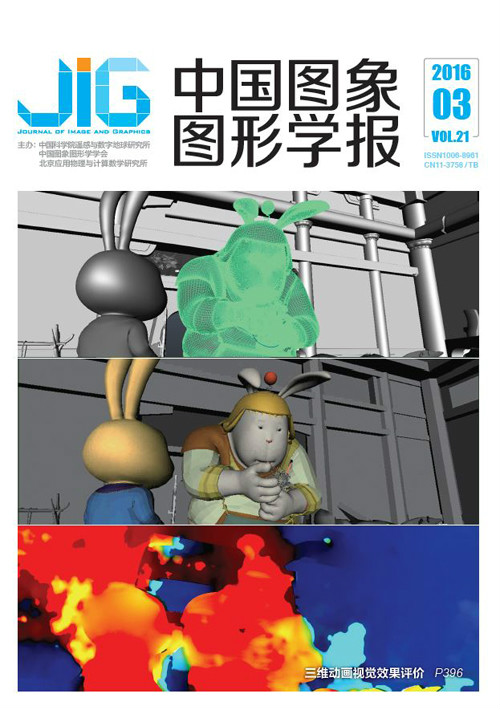
基于网格面积保持的图像智能适配显示
摘 要
目的 ASAP(as-similar-as-possible)算法在处理某些图像时存在着不足,即重要区域被过分压缩,而非重要区域被拉伸得很大。为此,在该算法已有的研究基础上提出一种改进后的图像处理算法。方法 利用二次规划,通过在原始能量方程中加入网格面积大小的累加项来改进原算法的能量方程,使网格在放缩过程中不仅要保证均匀缩放,也要保证每个网格的面积尽可能地大。对ASAP算法中被过分压缩和拉伸的图像区域进行保护。然后使用图像评测算法对处理图像进行打分,以衡量算法的改进效果。结果 改进后的算法保持了原算法的高效。从图像质量上来看,图像过度压缩或拉伸的程度有所缓解,图像较好地保留了原始图像中的信息。在客观评测中,改进算法得分较于原始算法有所增加。评分提高的百分比最大达到了39.0%. 结论 实验结果表明,改进后的算法不仅有较高的效率,而且保护了原始算法中被过分压缩或拉伸的图像区域,得到了视觉效果较好的处理图像。
关键词
Effective image retargeting based on the area of the preserved grids
Abstract
Objective Image retargeting is a technique that can flexibly display images with different aspect ratios on various devices. Among the image retargeting algorithms, the as-similar-as-possible(ASAP) algorithm has a high computing efficiency. In the ASAP algorithm, an energy function is minimized by solving a quadratic problem during 1D parameterization. However, in the ASAP algorithm, a significant part of an image with higher saliency values may be deformed into a small size and the background can be extremely stretched for several images. Based on the original algorithm, we propose an algorithm that can avoid these problems. Method The original ASAP algorithm uses a quadratic equation to calculate the widths and lengths of the grids of an image. We kept the quadratic format and added a new term to the equation. Aimed at ensuring a compatible change of widths and lengths while resizing an image as well as making each grid as large as possible, the term we added is the sum of the area of the grid, which prevents the image from over-compressing and over-stretching, but retains its efficiency. As for image retargeting quality assessment, the new algorithm exhibits a good performance. We used the quality assessment algorithm as a scoring test to evaluate the similarity between original and resized images. Result The result shows that the proposed algorithm obtains higher scores than the ASAP algorithm. Without parts of the image being over-compressed and over-stretched, the output images look more reasonable and more information is preserved. Scores also increase, and in several cases, the scores increase by at most 39.0%. Conclusion The new algorithm not only is an efficient content-aware image retargeting algorithm but also preserves more information from the original image than the ASAP algorithm.
Keywords
image processing image retargeting content-aware algorithm as-similar-as-possible algorithm quadratic problem
|



 中国图象图形学报 │ 京ICP备05080539号-4 │ 本系统由
中国图象图形学报 │ 京ICP备05080539号-4 │ 本系统由